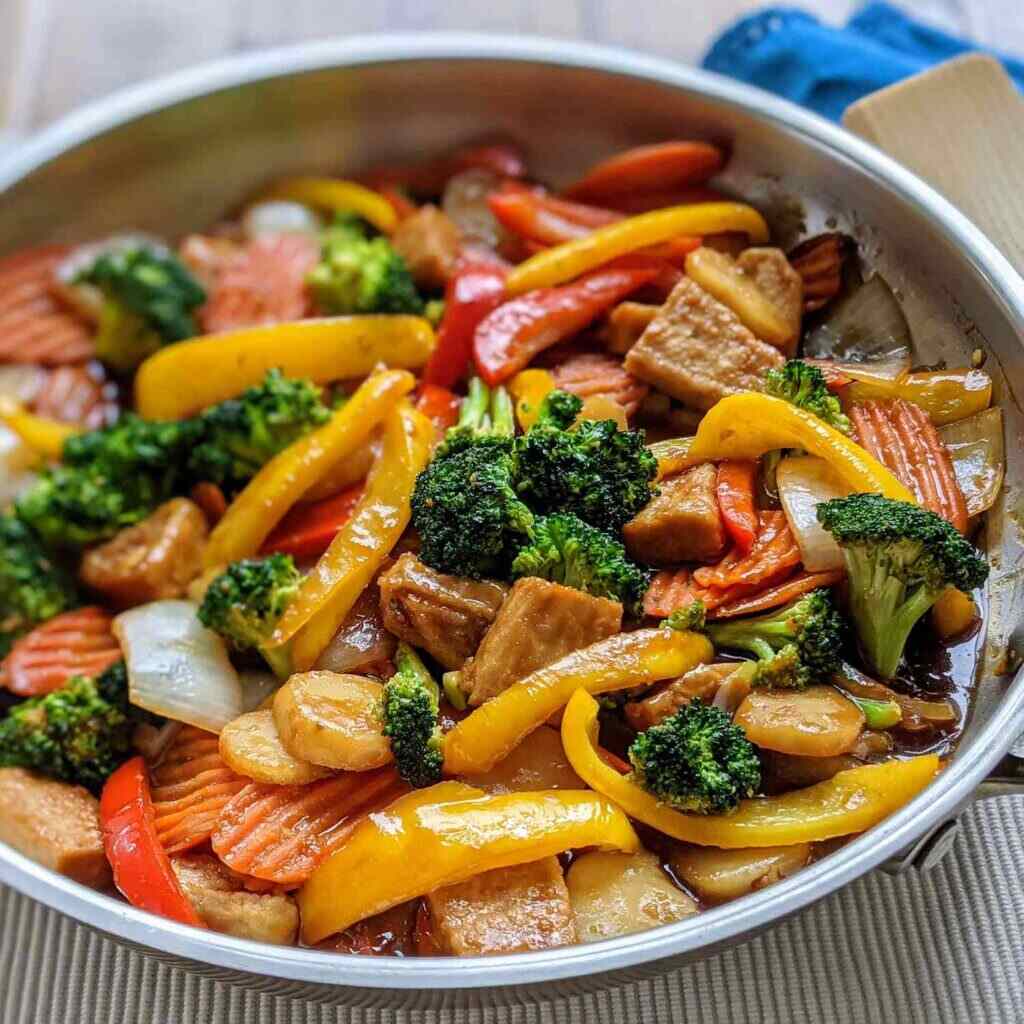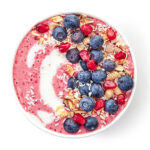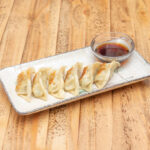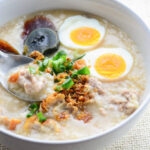Using soft chicken breast slices, colorful vegetables, and a savory sauce, Asian-style Chicken Stir-Fry is a delightful and healthy meal. This quick and easy stir-fry is inspired by Asian cuisine, known for its bold flavors and colorful presentations. This stir-fry offers a delicious balance of tastes and textures with its blend of savory chicken, crisp veggies, and a flavorful sauce. It’s a flexible dish that can be tailored to individual tastes and provides for a filling supper that is flavorful and nutritious.
Asian-style Chicken Stir-Fry:
| Ingredients: | |
| 1 | 2 thinly sliced boneless, skinless chicken breasts |
| 2 | 2 tablespoons soy sauce |
| 3 | 2 tablespoons oyster sauce |
| 4 | 1 tablespoon sesame oil |
| 5 | 1 tablespoon vegetable oil |
| 6 | 2 cloves garlic, minced |
| 7 | 1 inch ginger, grated |
| 8 | 1 bell pepper, thinly sliced |
| 9 | 1 carrot, julienned |
| 10 | 1 cup broccoli florets |
| 11 | Salt and pepper to taste |
Step-by-step cooking instructions Asian-style Chicken Stir-Fry:
Step-1 Soy sauce, oyster sauce, and sesame oil should be combined in a small bowl. Set apart.
Step-2 Large skillet or wok over medium-high heat to warm the vegetable oil.
Step-3 The grated ginger and the minced garlic should simmer in the skillet for about a minute.
Step-4 To the skillet, add chicken breast slices, and heat them until browned and cooked through.
Step-5 The vegetables should be crisp-tender after 3–4 minutes of stirring the broccoli, bell pepper, and carrot in the skillet.
Step-6 Pour the sauce over the chicken and vegetables in the skillet. Stir well to coat everything evenly.
Step-7 Cook for a further 1-2 minutes, or until the sauce begins to thin somewhat.
Step-8 According to taste, add salt and pepper.
Step-9 Serve the stir-fry over steamed rice or noodles.
Nutritional value of Asian-style Chicken Stir-Fry:
Chicken stir-fry prepared in the Asian style is a nutritious cuisine that has a good combination of protein, vitamins, minerals, and fiber. The exact nutritional values can vary depending on the specific ingredients and cooking methods used. Here is a general overview of the potential nutritional benefits:
| 1 | Protein: Lean protein sources, including chicken breast, are crucial for the body’s growth and repair of tissues. It helps to support muscle growth and development. |
| 2 | Vitamins: The vegetables used in the stir-fry, such as bell peppers, carrots, and broccoli, are rich in vitamins. The immune system is strengthened by vitamin C, which is found in bell peppers. Vitamin A, which is abundant in carrots and helps eye health, and vitamin K and folate are found in broccoli. |
| 3 | Minerals: Asian-style Chicken Stir-Fry can contribute to your mineral intake. Minerals like potassium and magnesium are found in vegetables like broccoli and bell peppers. These minerals are necessary to keep the body’s systems operating normally, particularly the nerve and muscular systems. |
| 4 | Fiber: The inclusion of vegetables in the stir-fry adds dietary fiber to the dish. Fiber helps with digestion, encourages feeling full, and may help control blood sugar levels. |
| 5 | Healthy Fats: The addition of sesame oil, commonly used in Asian-style cooking, provides small amounts of heart-healthy fats, including monounsaturated and polyunsaturated fats. |
Background History of Asian-style Chicken Stir-Fry:
Asian countries including China, Thailand, and Japan have affected the cuisine of a dish called Asian-style Chicken Stir-Fry. The cooking method known as stir-frying, which has a long history in Asian cuisine and has been employed for millennia, was used to make this dinner.
Ancient China is where the practice of stir-frying first emerged as a means of swiftly cooking food over a high heat. This cooking method allowed for the preservation of the food’s natural flavors, textures, and nutrients. Stir-frying involves cooking bite-sized pieces of ingredients in a hot wok or skillet, with constant stirring and tossing to evenly distribute the heat.
The ability to improve the flavor and color of ingredients while frying them quickly and effectively made stir-frying a staple of many Asian cultures. The Yin and Yang principles, which emphasize the harmony of flavors, textures, and colors in a dish, also had an impact on it.
A lean protein, such chicken, was added to the stir-frying procedure in the form of an Asian-style Chicken Stir-Fry. The dish combines thinly sliced chicken breast with a variety of colorful vegetables, resulting in a harmonious blend of flavors and textures.
Soy sauce, ginger, garlic, and sesame oil are popular ingredients in Asian-style Chicken Stir-Fry, though the ingredients and flavors used can vary by area and personal tastes. These ingredients add depth and complexity to the dish, enhancing its overall taste profile.
Due to its adaptability, health advantages, and mouthwatering flavors, Asian-style Chicken Stir-Fry is now gaining appeal all over the world. It showcases the culinary expertise and cultural diversity of Asian cuisine, offering a delightful and nutritious option for those seeking a quick and satisfying meal.
| Advantages of Asian-style Chicken Stir-Fry | |
| 1 | High Protein Content: Chicken breast is an excellent source of lean protein. It is the perfect option for people trying to boost their protein intake or maintain a healthy weight because it aids in tissue building and repair, encourages muscular growth, and increases satiety. |
| 2 | Nutrient-Rich: Vitamin B6, vitamin B12, iron, and zinc are among the vital vitamins and minerals found in chicken breast. Numerous biological activities, such as the generation of energy, support for the immune system, and preservation of healthy blood cells, depend on these nutrients. |
| 3 | Versatility: Chicken breast is a versatile ingredient that can be prepared in numerous ways. It can be used in salads, wraps, soups, stir-fries, the oven, the grill, and the oven. This versatility allows for a wide range of healthy and flavorful recipe options. |
| 4 | Low in Fat: Skinless chicken breast is naturally low in fat, particularly saturated fat. By choosing skinless cuts or removing the skin, you can reduce the overall fat content, making it a heart-healthy protein choice. |
| 5 | Weight Management: Incorporating healthy chicken breast recipes into your diet can support weight management goals. The high protein content promotes lean muscle building, boosts satiety, lessens cravings, and can help with weight loss or maintenance. |
| Disadvantages of Asian-style Chicken Stir-Fry | |
| 1 | Potential Dryness: Chicken breast, especially when cooked without the skin, can become dry if not properly prepared or overcooked. A less satisfying eating experience may result from this. However, using appropriate cooking techniques and marinades can help mitigate this issue. |
| 2 | Lack of Flavor: Chicken breast on its own can have a milder flavor compared to other cuts of chicken or meats. It requires proper seasoning, marinating, or pairing with flavorful ingredients and sauces to enhance its taste. |
| 3 | Risk of Contamination: Handling and cooking chicken requires proper food safety measures to avoid the risk of bacterial contamination, such as salmonella. Thoroughly cooking chicken to the recommended internal temperature (165°F or 74°C) and practicing proper hygiene in the kitchen is essential. |
| 4 | Price Variability: Depending on your location and the quality of chicken purchased, chicken breast can be more expensive compared to other cuts or meats. This can impact budget-conscious individuals or those with limited access to affordable chicken breast. |
| 5 | Limited Nutritional Variety: While chicken breast is a healthy protein source, relying solely on it in your diet may limit the variety of nutrients obtained from other protein sources. It is important to incorporate a diverse range of proteins, including plant-based sources, to ensure a well-rounded nutrient intake. |
Compare with similar meal of Asian-style Chicken Stir-Fry:
If you enjoy the flavors and style of Asian-style Chicken Stir-Fry, you might also like the following similar meals:
| 1 | Beef and Broccoli Stir-Fry: This dish features tender strips of beef cooked with broccoli florets in a savory sauce. It shares the stir-frying technique and the combination of meat and vegetables common in Asian cuisine. |
| 2 | Shrimp Stir-Fry: A delicious alternative to chicken, shrimp stir-fry combines succulent shrimp with an assortment of colorful vegetables. It can be seasoned with similar Asian-inspired sauces and spices for a flavorful meal. |
| 3 | Tofu Vegetable Stir-Fry: For a vegetarian or vegan option, tofu stir-fry is a fantastic choice. Cubes of tofu are stir-fried with an array of fresh vegetables, offering a protein-rich and plant-based alternative to chicken stir-fry. |
| 4 | Teriyaki Chicken: Teriyaki chicken features chicken breast or thigh meat marinated in a sweet and savory teriyaki sauce, then grilled or pan-seared. It shares the Asian-inspired flavors and cooking techniques found in stir-fry dishes. |
| 5 | Sesame Ginger Chicken: This dish combines chicken breast with a zesty sesame ginger sauce. It has a similar profile of bold flavors and can be served alongside steamed rice or stir-fried vegetables. |
Mostly questions asked about Asian-style Chicken Stir-Fry
1: How do I make Asian-style Chicken Stir-Fry?
A: An Asian-style chicken stir-fry can be made by thinly slicing boneless chicken breasts and stir-frying them with a range of colorful vegetables, such as bell peppers, carrots, and broccoli, in a hot pan or wok. For flavor, incorporate a soy sauce, ginger, garlic, and sesame oil sauce. Cook the chicken until it is thoroughly done and the veggies are crisp-tender.
2: What vegetables can I use in Asian-style Chicken Stir-Fry?
A: Numerous vegetables, such as bell peppers, carrots, broccoli, snap peas, mushrooms, bok choy, and water chestnuts, can be used to make an Asian-style chicken stir-fry. Feel free to alter the vegetables to suit your tastes and the ingredients you have on hand.
3: Can I use other meats instead of chicken in Asian-style Stir-Fry?
A: Yes, you can use other meats such as beef, shrimp, or tofu as alternatives to chicken in Asian-style Stir-Fry. Adjust the cooking time accordingly depending on the protein you choose.
4: What sauces can I use in Asian-style Chicken Stir-Fry?
A: Asian-style chicken stir-fries frequently use soy sauce, oyster sauce, teriyaki sauce, hoisin sauce, or a combination of these sauces. These sauces give the food a savory and umami flavor.
5: Can I make Asian-style Chicken Stir-Fry without soy sauce?
A: Yes, you can prepare an Asian-style chicken stir-fry without soy by substituting other sauces like coconut aminos, tamari (gluten-free soy sauce), or a homemade sauce created from components like fish sauce, lime juice, and honey.
6: How do I prevent chicken breast from becoming dry in Stir-Fry?
A: To prevent chicken breast from becoming dry in Stir-Fry, make sure not to overcook it. Avoid cooking the chicken for too long and cook it only until it is done. For added moisture and tenderness, marinade the chicken before cooking.
7: Can I make Asian-style Chicken Stir-Fry ahead of time?
A: While stir-fries are best consumed right after cooking, some of the ingredients, such as chopping the chicken and vegetables, can be prepared in advance. You can also make the sauce in advance. When you’re ready to serve, you may quickly assemble the ingredients and prepare them thanks to this.
8: What are some variations of Asian-style Chicken Stir-Fry?
A: Some variations of Asian-style Chicken Stir-Fry include adding cashews or peanuts for crunch, incorporating pineapple or mango for a touch of sweetness, or adding spices like chili flakes or Sriracha for some heat. To develop distinctive flavor profiles, experiment with various vegetable and herb combinations.
9: Can I freeze leftovers of Asian-style Chicken Stir-Fry?
A: Asian-style Chicken Stir-Fry leftovers can be frozen for up to 2-3 months, but stir-fries are tastiest when eaten right away. On the stovetop or in the microwave, gradually thaw and reheat the food, adding a little water or sauce if necessary.
10: What are some side dishes that go well with Asian-style Chicken Stir-Fry?
A: Common side dishes that complement Asian-style Chicken Stir-Fry include steamed rice, fried rice, noodles (such as rice noodles or chow Mein), or a side of mixed greens or Asian-inspired slaw. These sides help to complete the meal and provide a balanced plate.







